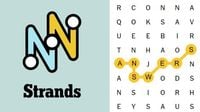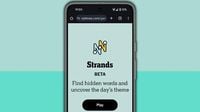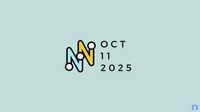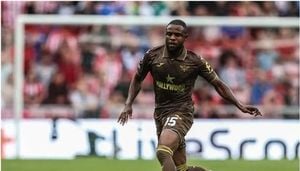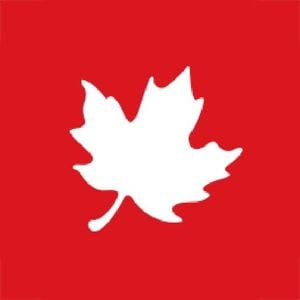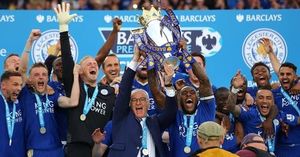On October 11, 2025, puzzle enthusiasts across the globe were greeted with a familiar challenge from the New York Times: the daily Strands word game. But this wasn’t just any puzzle—it was a celebration of the visual powerhouses that have shaped modern branding. The day’s theme, aptly titled "That's branding," invited players to dive into a world where a single image can tell a story, spark nostalgia, or even define an era. For countless morning solvers, it was a reminder that sometimes, a logo says more than words ever could.
Strands, the New York Times’ latest addition to its suite of word games, has quickly become a favorite among word lovers. Unlike its predecessors such as Wordle or Connections, Strands brings a twist to the classic word search. Here, words can snake through the grid in any direction—up, down, left, right, or diagonally—and every letter is part of an answer. The game’s unique format means that players must think flexibly, often tracing quirky shapes and patterns to uncover the hidden words.
According to Mashable, the October 11 puzzle revolved around visuals tied to branding, with every answer representing a logo or symbol recognized instantly around the world. The puzzle’s spangram—a special word or phrase that sums up the theme and stretches across the grid—was “Iconic Logos,” running vertically from the top to the bottom of the board. The word list for the day included PEACOCK, SHELL, BULLSEYE, SWOOSH, APPLE, ARCHES, and, of course, ICONIC LOGOS itself.
As NerdsChalk noted, the puzzle didn’t just ask for brand names; it celebrated the universal language of visual identity. “With just one glance, some symbols tell entire stories,” the article explained, highlighting how the theme played on instant recognition. The PEACOCK, for instance, is NBC’s vibrant emblem, while the SWOOSH marks Nike’s signature of speed and motion. The BULLSEYE stands for Target, APPLE is the tech giant’s sleek logo, and ARCHES nod to McDonald’s golden arches—a symbol so powerful it transcends language and geography. SHELL, another entry, points to the global energy company’s unmistakable shell logo.
The puzzle also included SEARCH as a nod to Google’s global dominance, though not every outlet listed this among the day’s answers. What united all these symbols, as NerdsChalk put it, was the fact that “no text needed—these stand out without words.” The simplicity, memorability, and global reach of these logos were at the heart of the challenge.
For those who found themselves stuck, Strands offered a clever in-game hint system. As explained by NerdsChalk, players could earn hints by spotting non-theme words of at least four letters within the grid. Each valid extra word rewarded the player with a hint, which, when used, would automatically reveal one of the theme words. This system encouraged strategic play: “Don’t just burn hints—use them strategically when the grid feels impossible,” the outlet advised. Sometimes, a single revealed word could unlock the entire board.
If you were searching for clues to get started, TechRadar listed some words—NICE, COPE, GLOSSY, SHOW, SELL, PEAK—that could be played to unlock the hints system. The spangram, consisting of 11 letters, stretched from the top first column to the bottom third column, as confirmed by the same source. The puzzle was rated easy by one reviewer, who achieved a perfect score, but not everyone found it a walk in the park. According to Strands Sidekick, the puzzle was rated “moderate” by paid testers, suggesting a range of experiences depending on the solver’s familiarity with global branding.
What’s remarkable about these logos is their ability to transcend words and cultures. As TechRadar pointed out, Target’s BULLSEYE and NBC’s PEACOCK are recognized far beyond the United States, while others like the Nike SWOOSH and McDonald’s ARCHES are simply ubiquitous. The stories behind these symbols are as fascinating as their designs. Take the Nike SWOOSH, for example: it was created by graphic design student Carolyn Davidson, who was reportedly paid just $35 for her work. Years later, Nike gave her shares in the company, which by 2023 were worth a staggering $3 million. Not a bad return for a simple, yet unforgettable, stroke of genius.
Strands itself is a testament to the enduring appeal of word games. Released at midnight in each time zone, it offers a daily ritual for players worldwide. Strands Sidekick described how the game’s difficulty is averaged from tester ratings, and how community engagement is encouraged through comment sections where solvers can swap stories, share tips, and even connect over creative writing. For those seeking a bit more help, hints can reveal the first letter or direction of up to three theme words—just enough to nudge a stuck player forward without giving away the whole game.
As TechRadar and Mashable both emphasized, Strands is more than just a puzzle; it’s an exploration of how symbols shape our collective consciousness. The October 11 edition, with its focus on branding, was a masterclass in visual storytelling. Each logo in the puzzle was a testament to the power of design—how a simple image can evoke trust, nostalgia, or excitement, all without a single word. The day’s challenge reminded solvers that branding isn’t just about selling products; it’s about forging connections that stick with us for a lifetime.
For those looking to up their Strands game, the advice is straightforward: start with the obvious connections to the theme, scan for diagonals (since Strands loves to hide words at an angle), and build around the words you’ve already found. And, perhaps most importantly, don’t be afraid to use hints when you’re truly stuck. As the puzzle for October 11 showed, sometimes a little nudge is all it takes to see the bigger picture.
By the end of the day, players had not only solved a clever puzzle but also taken a moment to appreciate the artistry and impact of the world’s most iconic logos. For the New York Times and its legion of Strands fans, it was another reminder of why word games—and the stories they tell—never go out of style.
